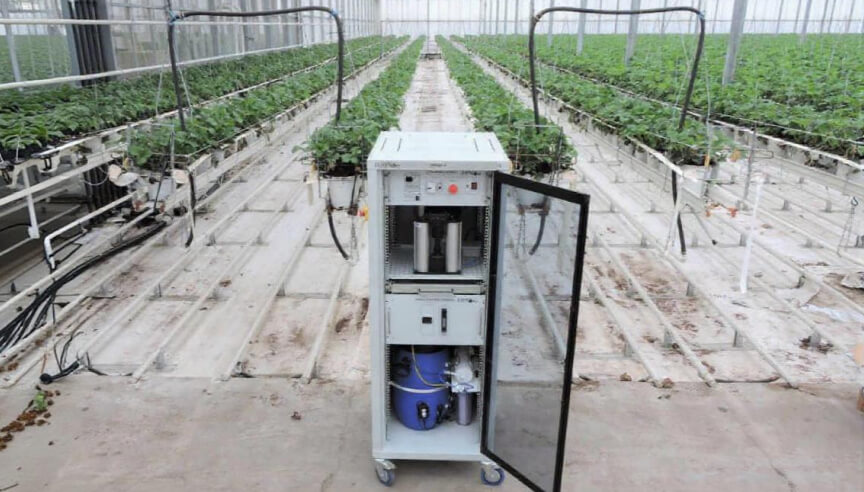Recent Posts
Use of Hydrogen Peroxide in Hydroponics

Global Use of Hydrogen Peroxide in Hydroponics: Insights and Middle East Applications
Introduction
Hydroponic cultivation—a modern method of growing plants without the use of soil—has garnered significant interest across the globe. This technique depends on nutrient-enriched water and carefully controlled environmental conditions to maximize plant productivity. Among the many factors influencing success in hydroponics, maintaining high water quality is paramount. One compound that plays a pivotal role in water treatment is hydrogen peroxide (H₂O₂), a versatile oxidizer known for its disinfectant properties. Its application in hydroponics is increasingly widespread, as it helps combat root diseases, curb algae proliferation, and boost dissolved oxygen levels. This paper examines global trends in hydrogen peroxide usage in hydroponics, with a detailed exploration of its role in the Middle Eastern agricultural context.
Functions of Hydrogen Peroxide in Hydroponic Systems
Hydrogen peroxide performs several essential functions within hydroponic systems. Primarily, it acts as both a disinfectant and an oxygen enhancer. When H₂O₂ decomposes, it produces oxygen and water, thus enriching the nutrient solution with dissolved oxygen. This increased oxygen availability is crucial for robust root respiration, which, in turn, facilitates efficient nutrient uptake.
Additionally, hydrogen peroxide is instrumental in controlling harmful pathogens that flourish in nutrient-dense water environments. Notably, it offers protection against Pythium—a common pathogen responsible for root rot. By breaking down organic debris and disrupting microbial colonies, H₂O₂ lowers the risk of infection and ensures a healthier growing medium.
Techniques for Application and Optimal Dosage
Effective hydrogen peroxide use in hydroponics requires careful attention to concentration levels and application frequency. Typically, food-grade H₂O₂ solutions ranging from 3% to 35% are employed, with the appropriate dilution depending on specific crop requirements and system design.
For general upkeep, a low-concentration solution (approximately 3%) is periodically added to the reservoir to inhibit biofilm formation and maintain clean irrigation pathways. In instances of pathogen outbreaks, temporarily increasing the concentration can aid in system sanitization. However, excessive application can harm root tissues and beneficial microbes, underscoring the importance of precise monitoring and dosing.
International Trends in Hydrogen Peroxide Application
Countries with well-established hydroponic industries—such as the Netherlands, the United States, and Canada—have developed standardized guidelines for hydrogen peroxide usage. These protocols are informed by extensive research into optimal concentrations and application methods.
In regions like Southeast Asia, where high humidity fosters rapid pathogen growth, hydrogen peroxide is often used in combination with other sterilization technologies, such as UV treatment. This layered approach provides enhanced protection against a wide range of microbial threats.
Hydroponics in the Middle East: A Unique Context
The adoption of hydroponic farming in the Middle East has surged in response to regional water scarcity and extreme climatic conditions. Countries like the United Arab Emirates, Saudi Arabia, and Qatar have prioritized investment in controlled-environment agriculture, with hydroponics playing a central role in their food production strategies.
In this environment, hydrogen peroxide is especially valuable for maintaining water quality. The high ambient temperatures characteristic of the Middle East accelerate biofilm growth and microbial activity within hydroponic systems. Regular H₂O₂ application helps mitigate these issues by sterilizing the nutrient solution and maintaining elevated oxygen levels.
Moreover, many hydroponic farms in the Middle East rely on desalinated water. While desalinated water is relatively free from microbial contaminants, it may still contain trace organic matter that encourages biofilm formation. Proper hydrogen peroxide usage prevents such buildups, ensuring optimal plant growth conditions.
Potential Drawbacks and Management Strategies
Despite its advantages, hydrogen peroxide use presents certain challenges. A primary concern is its instability; exposure to heat and light accelerates its decomposition. This is a notable issue in the Middle East, where high temperatures can reduce the compound’s efficacy.
Additionally, over-reliance on hydrogen peroxide can damage plant roots and suppress beneficial microbial populations essential for nutrient cycling. Maintaining a balanced approach by integrating H₂O₂ with other management techniques is crucial to preserving microbial diversity and ensuring long-term system health.
Future Directions
Advancements in technology offer promising avenues for improving hydrogen peroxide use in hydroponics, particularly in arid regions. The development of real-time monitoring tools—capable of detecting dissolved oxygen levels and pathogen presence—could facilitate more precise and responsive H₂O₂ dosing.
Furthermore, research into heat-stabilized hydrogen peroxide formulations may enhance its applicability in high-temperature environments. Exploring synergies between hydrogen peroxide and other oxygenation methods or biostimulants could also yield more sustainable and efficient water management practices.
Conclusion
Hydrogen peroxide is an integral component of modern hydroponic farming, providing critical benefits in terms of sterilization, oxygenation, and pathogen control. Its widespread adoption across diverse climatic zones underscores its importance in ensuring high water quality and plant health.
In the Middle East, where agricultural innovation is essential to overcoming environmental constraints, hydrogen peroxide has become a cornerstone of hydroponic practices. Nevertheless, careful management and continued research are necessary to optimize its use and address inherent limitations. By adopting a balanced approach that incorporates emerging technologies and sustainable techniques, the region can further strengthen its hydroponic sector and contribute meaningfully to global agricultural resilience.
